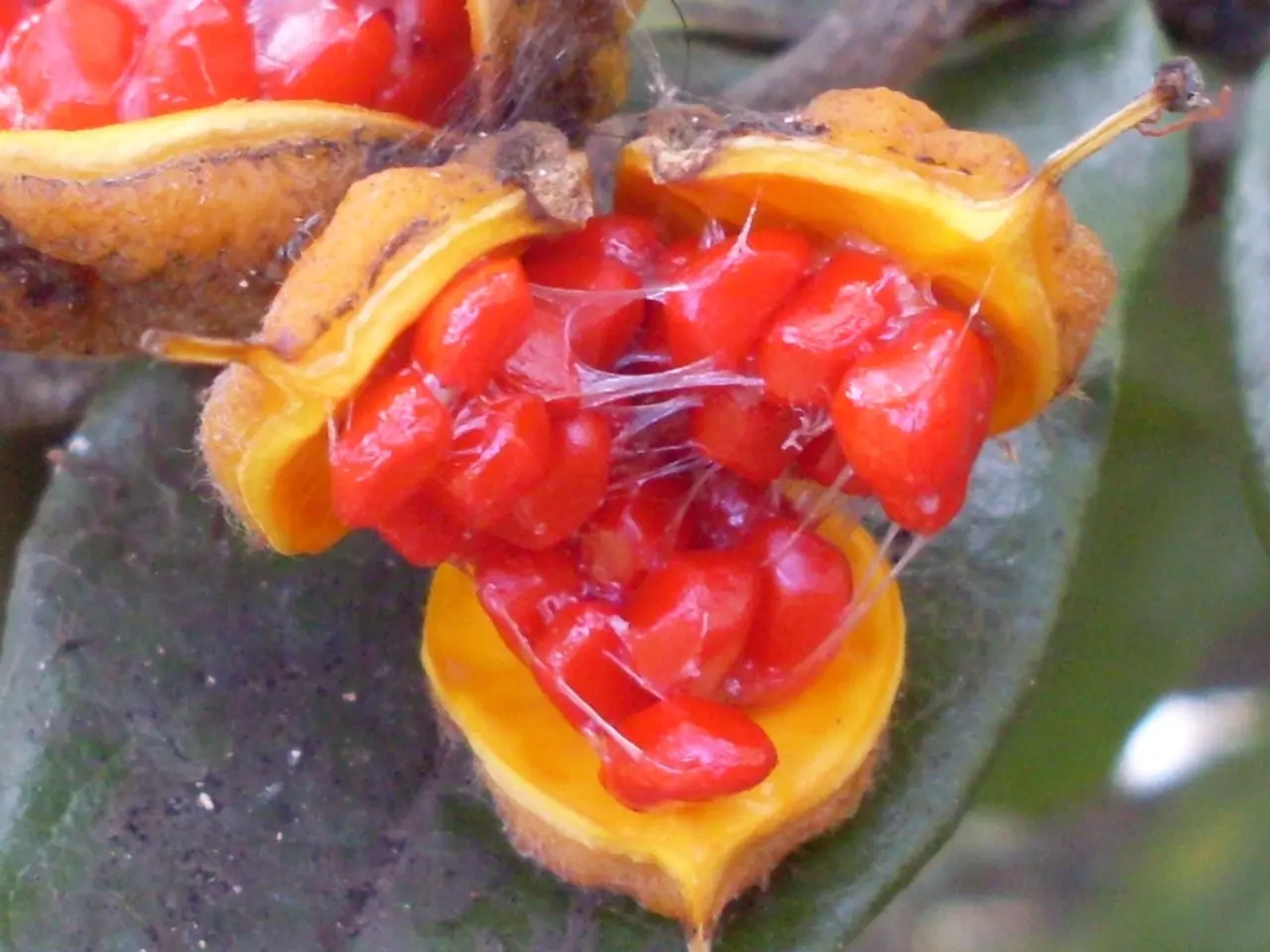Rotten Apple Core
In the world of apple and pear cultivation, one disease poses a significant threat - bitter rot. This fruit rotting disease, caused by the fungi Colletotrichum gloeosporioides, C. acutatum and Glomerella cingulata, can be devastating for growers.
Symptoms of bitter rot initially appear as small, slightly sunken circular areas that are light to dark brown in color. As the disease progresses, these spots expand, leading to a V-shaped, brown watery lesion when making a cross-section of the infected fruit.
Effective management of bitter rot involves an integrated approach that includes sanitation, cultural practices, and chemical control.
Sanitation is critical in controlling bitter rot. Overwintering inoculum such as mummified fruit, dead wood, cankers, and fire blight-infected shoots should be removed and destroyed. Dropping and removing rotting fruit during harvest also helps reduce sources of infection.
Cultural practices focus on improving the orchard environment to reduce disease development. Thinning fruit to avoid tight clusters and maintaining an open canopy via summer pruning to improve airflow and reduce humidity around the fruit are key strategies.
Chemical control should target critical infection periods with fungicides that have demonstrated effectiveness on bitter rot. Preharvest sprays with Merivon or Pristine, both containing strobilurin fungicides in FRAC Group 11, provide effective control, especially with spray intervals of 7 to 10 days. When resistance to FRAC 11 fungicides is suspected, a high rate of captan preharvest for protection is recommended. Topsin is also useful prior to harvest, effective on bitter rot and related diseases when applied at 7-10 day intervals. Postharvest fungicides such as Merivon, Luna Sensation, or Flint Extra may be used to minimize rot during storage.
For organic management, sulfur and bacterial-based products (e.g., Serenade) can help reduce short-term rot risk, but are less effective for prolonged storage.
For current fungicide recommendations, commercial growers are referred to the Midwest Fruit Pest Management Guide. Backyard growers are referred to Bulletin 780 for controlling diseases and insects in home fruit plantings.
It's important to note that cankers generally develop on stressed or weakened trees, especially winter-injured trees. Pruning trees annually and maintaining a balanced fertility program based on soil and foliar nutrient analyses is important. Removing and burning mummified fruit from trees throughout the growing season reduces inoculum levels.
Bitter rot is a disease that affects apples and pears in all states where they are grown. In the spring, spores (conidia and/or ascospores) from these overwintering sites serve as the primary inoculum source for new infections. Disease development is favored by high temperatures (80-90 degrees F) and high relative humidity (80-100%). The fungi survive the winter in dead wood or mummified fruit that were infected during the previous season.
Chopping dead wood on the ground with a flail-type mower increases the rate of decomposition. Fungicides applied from first cover until harvest can control fruit rot if a good sanitation program is implemented.
This integrated approach targets the pathogen’s lifecycle and environmental conditions that favor infection, leading to more effective bitter rot management in apples and pears.
- The science of environmental-science plays a crucial role in pest management strategies, as it involves the understanding and optimisation of the orchard environment to reduce disease development, such as maintaining a balanced fertility program based on soil and foliar nutrient analyses.
- In the realm of health-and-wellness and fitness-and-exercise, removing and burning mummified fruit from trees throughout the growing season mirrors the importance of regular cleanliness and removal of potential health-related hazards in maintaining a healthy lifestyle.
- As nutrition is integral to overall health, an adequate balance of nutrients can help strengthen trees and decrease their susceptibility to diseases like bitter rot, as stressed or weakened trees are more prone to cankers.




